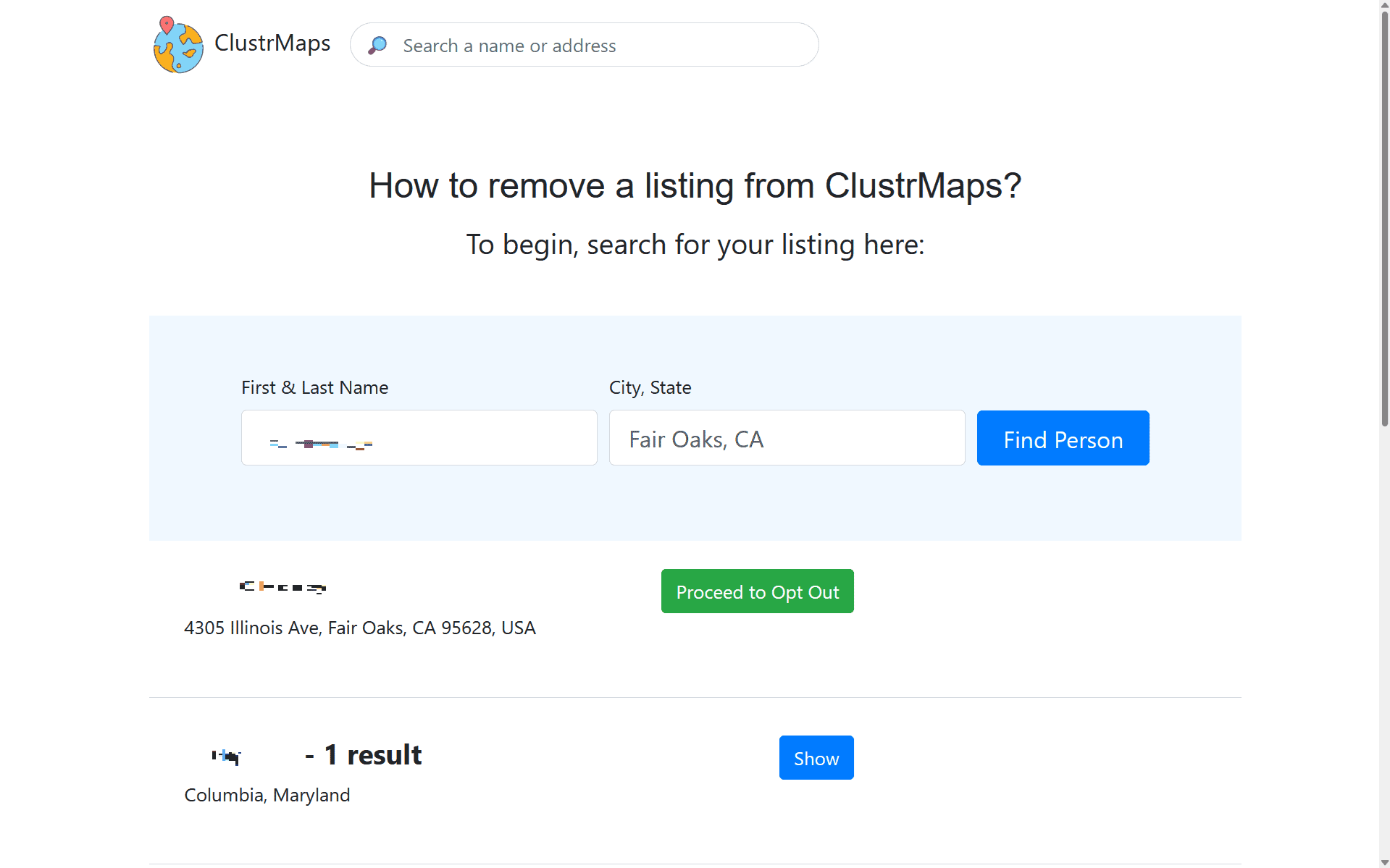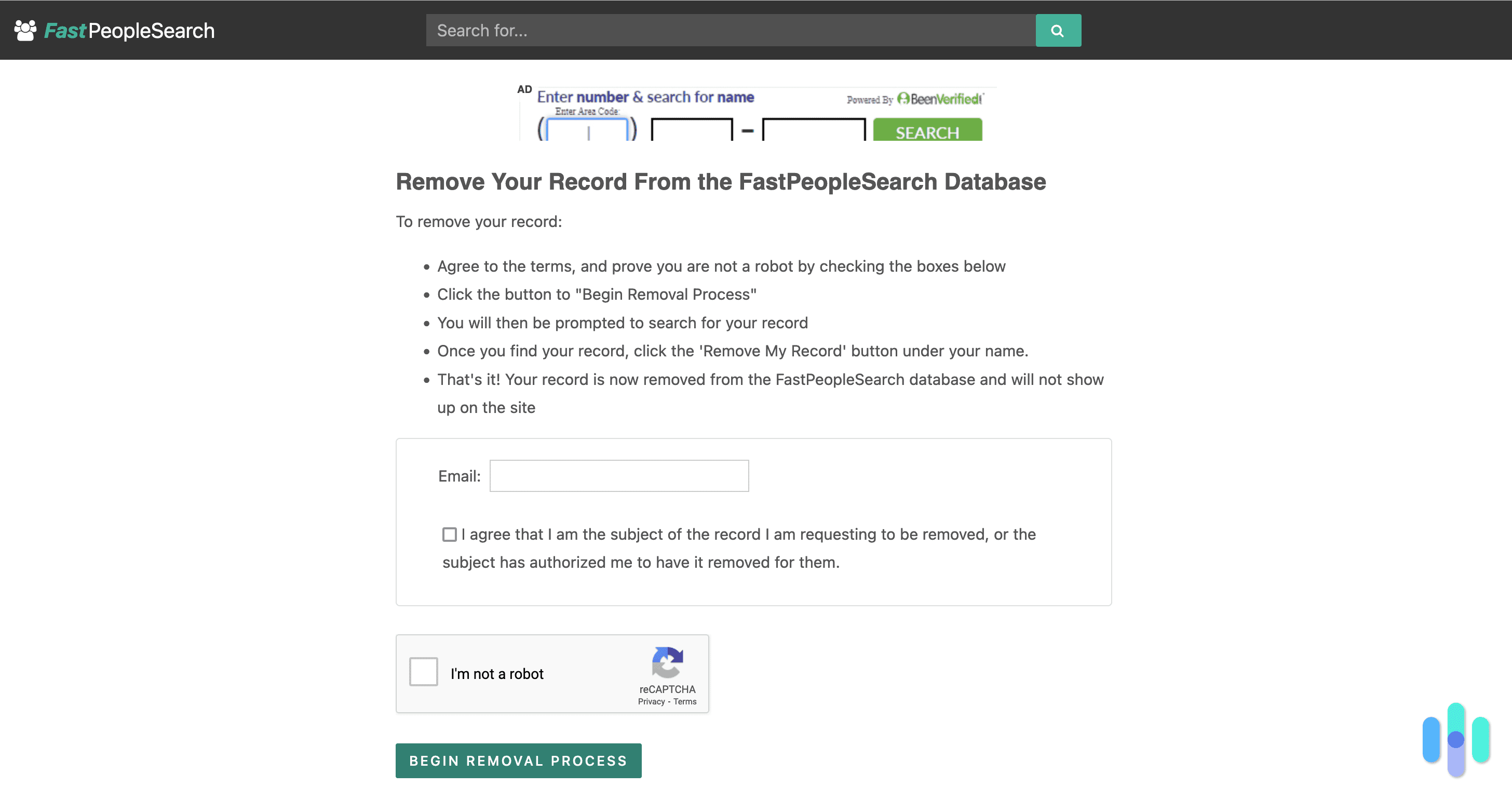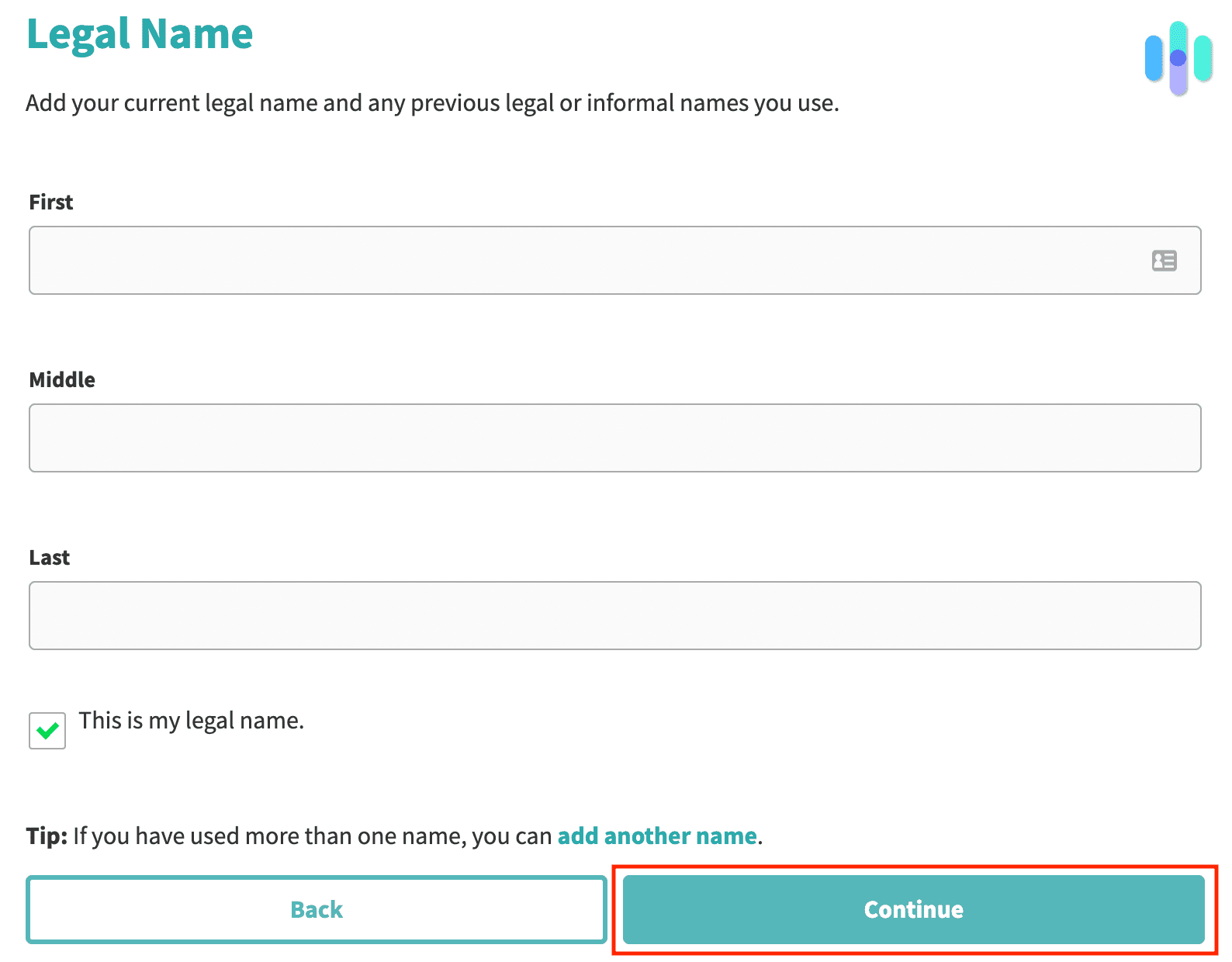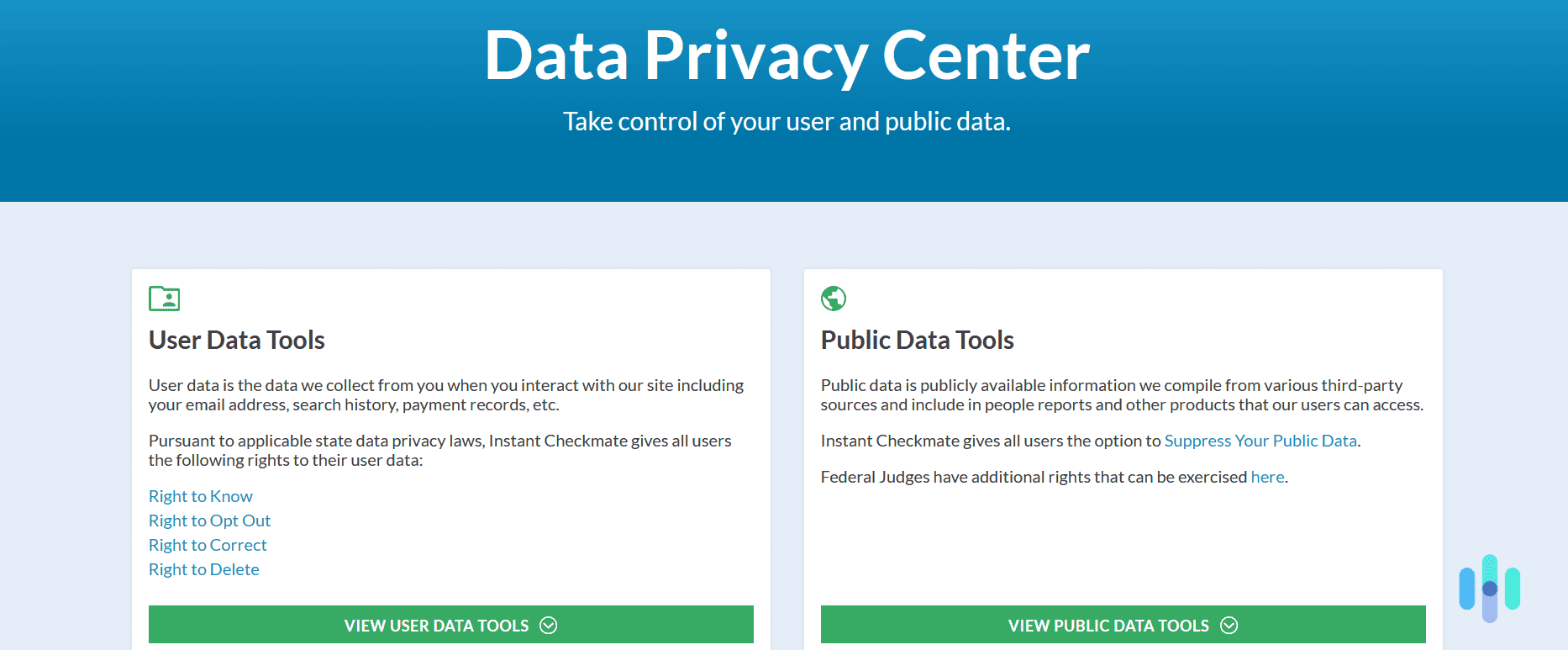Data theft and the dark web go hand in hand in our minds. But not all data thieves hang out on the dark web — and they’re not all technically “thieves.” Data brokers like MyLife, for example, aren’t technically stealing from us. They’re amassing troves of data about us that’s already legally available in public records.
The problem is, not all of the information may be accurate. And even worse, the accurate details — like your address and your phone number — are available to fraudsters and predators. Sound horrible? Don’t worry. In this guide, we’ll show you what sites like MyLife really do with your data and how you can opt out. We’ll also introduce you to a digital tool that makes the opt-out process easier — namely, a data removal service.
What is MyLife?
MyLife, previously Reunion.com, is a people search site that purportedly helps people find information about other people. Except MyLife’s is a little different. For one, it’s free, unlike others that charge users to see their profiles. Two, it assigns people in its database a reputation score. The score is typically a lot lower than you’d like — say a 2.6 out of 5. In order to see what specific criteria are dragging your reputation down, you have to pay.
>> Read More: Removing Your Address From People Search Sites
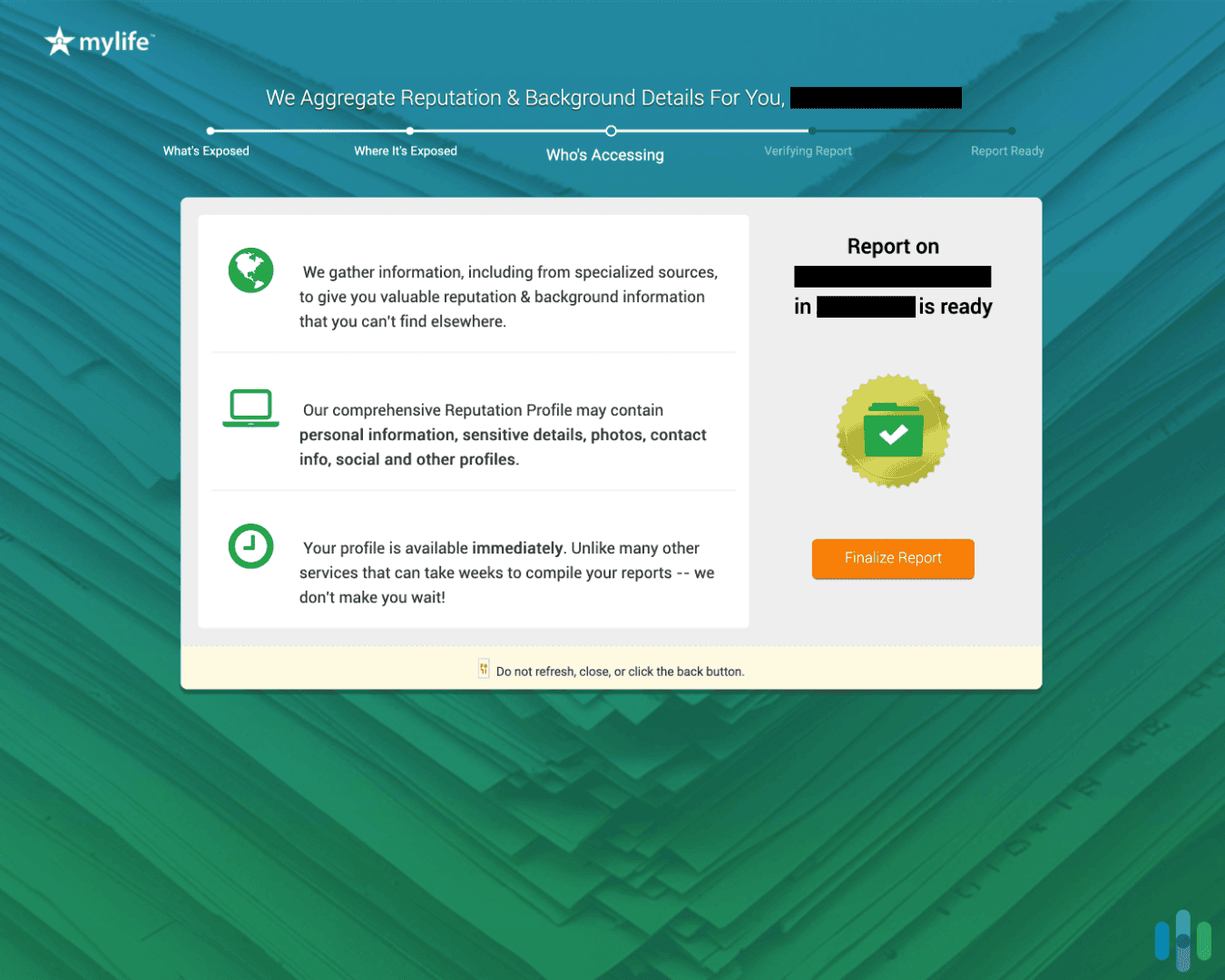
If MyLife smells like a scam, that’s exactly what the DOJ thought. In 2021, MyLife’s CEO Jeffrey Tinsley got slapped with a $34 million fine.1 But the fine didn’t shut Tinsley down. The site is still out there. And the chances that you — and all your personally identifiable information (PII) — are on it are nearly 100%. Here’s how to fix that.
>> Related: How to Protect Yourself From the Latest Online Scams
Pro Tip: Before we visited MyLife, we switched on our VPN to hide our IP address and encrypt our traffic. If you’re unfamiliar with how a VPN works or why it’s necessary, here’s our complete guide to using VPNs.
How to Opt Out of MyLife
Opting out of MyLife is fairly straightforward, but there are a few sticking points we’ll outline below. The important thing is not to give up halfway through — which is what MyLife wants you to do. Here’s what you need to do from start to finish.
1. Scroll down to the bottom of the MyLife homepage and click on FAQ. As we noted above, MyLife doesn’t want you to remove your data, so they’re not going to make it easy. We faced the same obstacle opting out of PeopleFinders. In MyLife’s case, the info is buried in their FAQ.
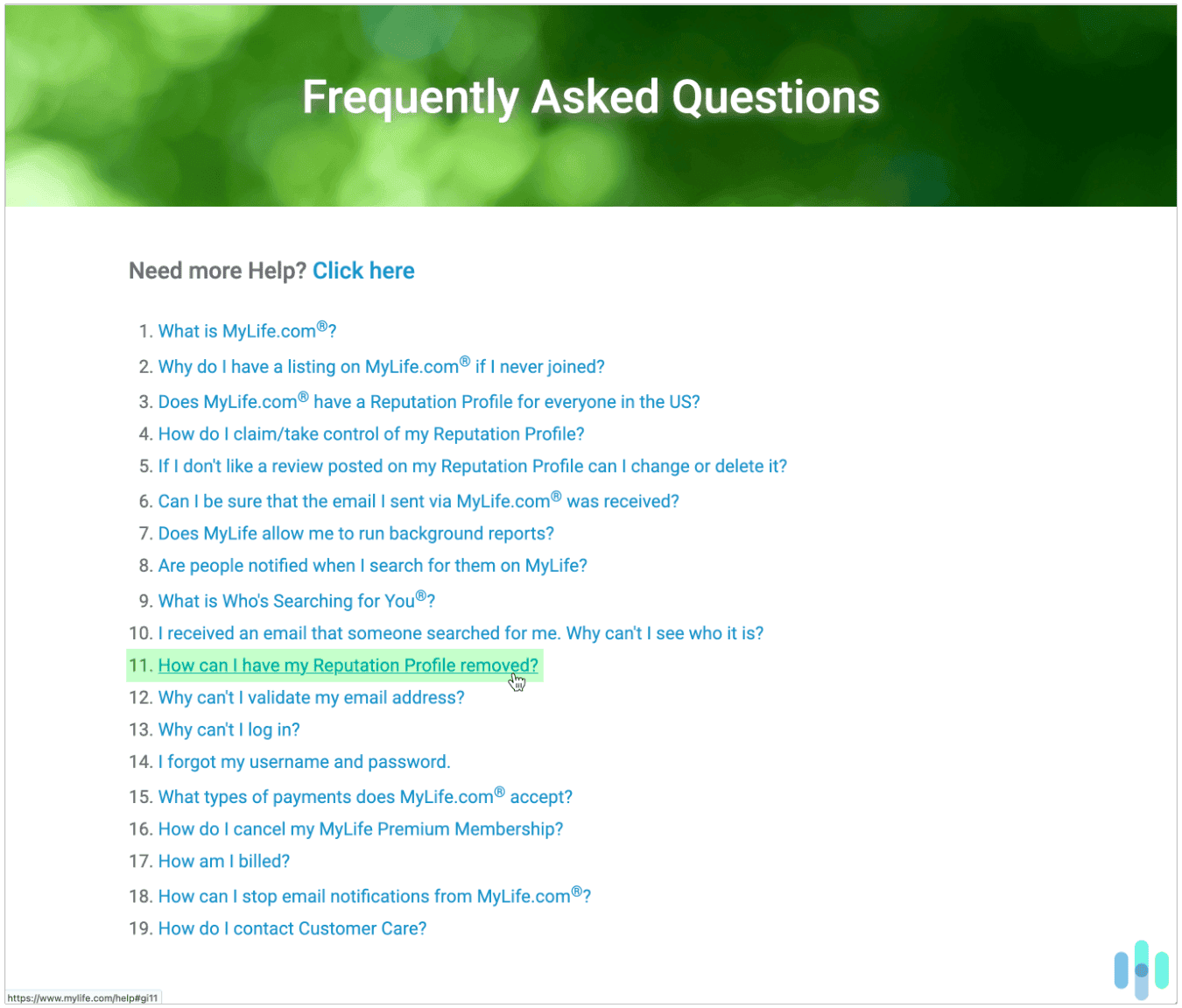
2. Remove your profile. On the FAQ page, scroll down to number 11. There, you’ll find two actions you can take. The first is removing your Reputation Profile from MyLife. To do this, you’ll need to send an email — like the one we sent below — to membersupport@mylife.com with a written request.
Pro Tip: To communicate with companies like MyLife, we recommend using an email alias that isn’t connected to your identity. The easiest way to do this is to set up a Gmail account exclusively for data removal requests.
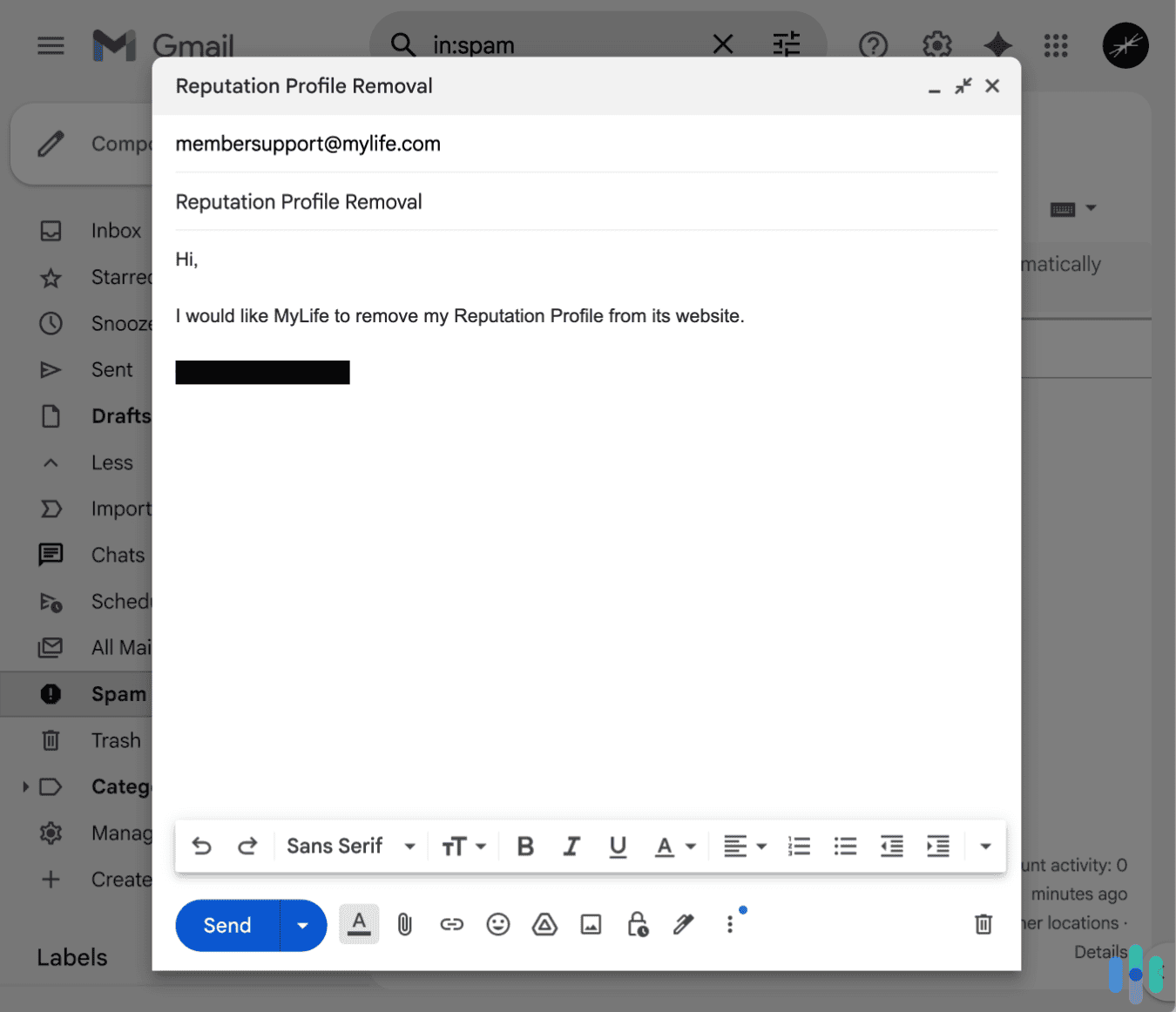
3. Start MyLife’s opt-out process. MyLife is a data broker, meaning they collect and sell our data to other companies. To stop MyLife from selling your data to others, click on the Do Not Sell My Personal Information link.
>> Also: Five Easy DIY Opt-Outs
4. Fill out the opt-out form. Give MyLife your first and last name and your email address. If you’re using an alias to hide your real email address, now’s the time to use it.
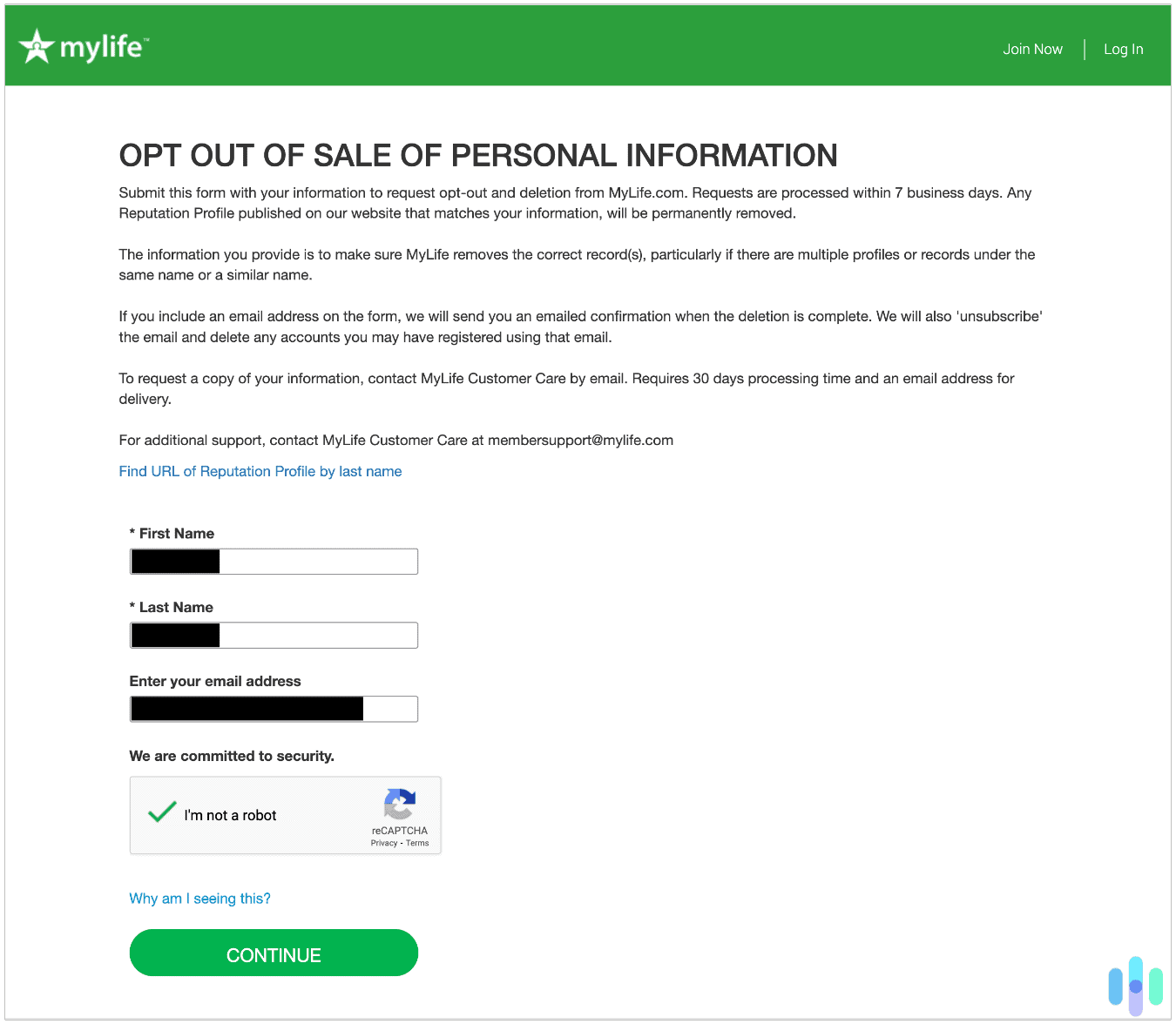
5. Find your verification code and enter it on the screen. MyLife will send you an email with a verification code before it processes your request. Ours came in seconds. Copy the code and enter it on the screen.
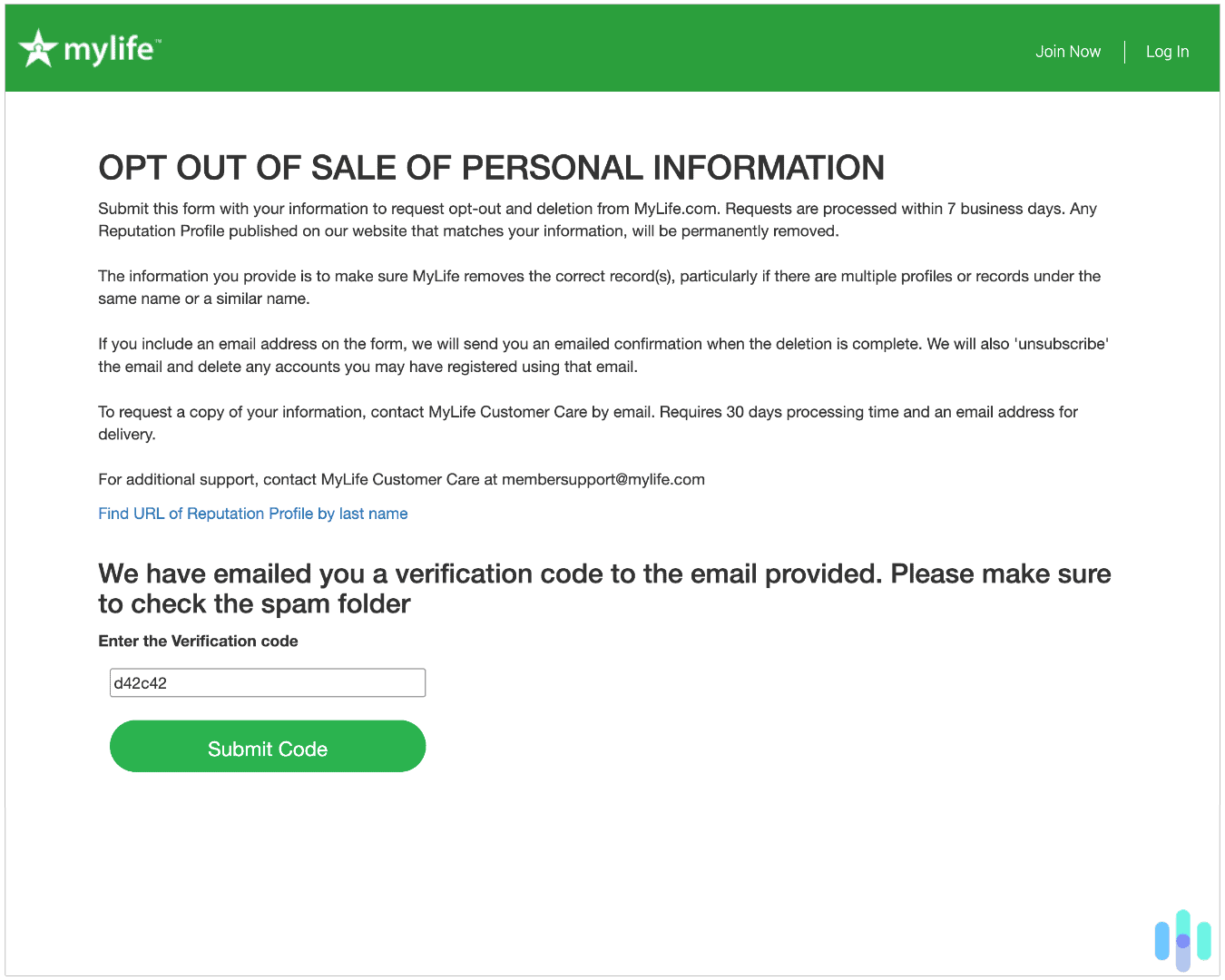
6. Fill out another opt-out form. This part is kind of confusing. After you enter your verification code, the MyLife opt-out form (which you just filled out) will appear again — this time with additional form fields. Fill out the rest of the form and you’re done. MyLife should process your request in 15 days, but sometimes they’re much faster. Our confirmation came in less than 24 hours.
>> Learn More: Removing Your Address From People Search Sites
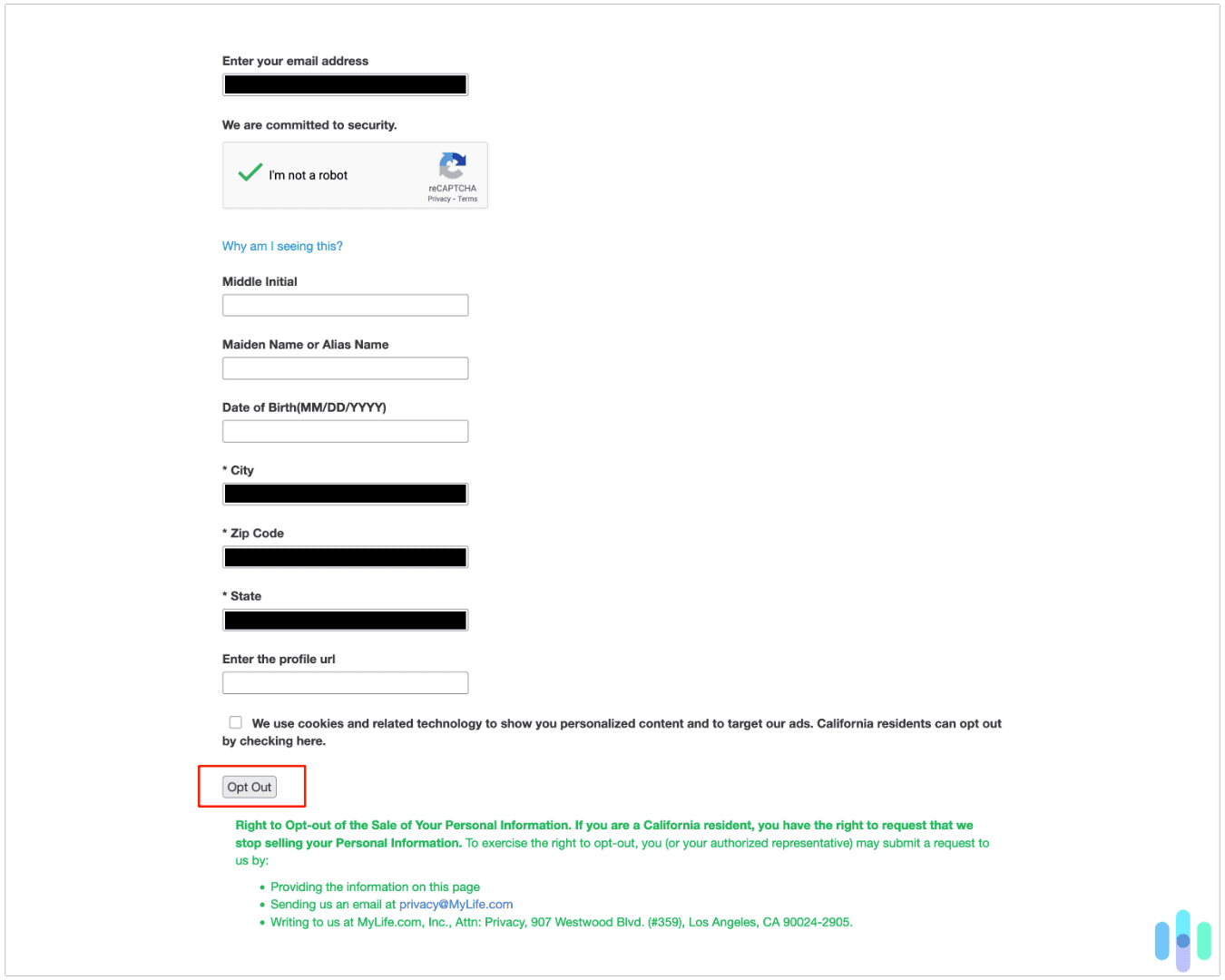
Opting Out of MyLife Using a Data Removal Service
As we’ve seen, opting out of MyLife isn’t tough — but it is time-consuming. It’s also only temporary. Depending on how often MyLife updates its databases, your data could be back in a month…or a day. Also, keep in mind that there are over 5,000 data brokerages in the world like MyLife farming out our data.2 We can’t opt out of all of them.
We can’t — but there are companies that automate the process so that we don’t have to do anything. They’re called data removal services. The process is simple: find a data removal service you trust, sign up, and sit back while they handle the opt-outs for you.
Aura’s data removal service saves you time and effort by requesting data removal on your behalf. Easily opt out from 250+ data brokers collecting and selling your personal information.

How Data Removal Services Work
Data removal services are faster and cover far more ground than we possibly could. And because many of them send opt-out requests automatically at regular intervals, you won’t have to opt out manually again and again.
However, as you’d expect, premium data removal isn’t free. The services we’ve tested range from $4 to $20 monthly — though you can occasionally find deals. Incogni, for instance, bundles its data removal service into certain Surfshark One packages.
But we still understand why carving yet another tech subscription out of your monthly budget isn’t the ideal solution. Here are a few more DIY opt-out guides to get you started:
- Opting out of Spokeo
- Opting out of BeenVerified
- Opting out of PeopleLooker
- Opting out of FamilyTreeNow
- Opting out of Intelius
Pro Tip: If you’re doing this manually, we recommend making a spreadsheet like we did. It’ll come in handy a month down the line when you’re checking whether MyLife — or any other people search site — snuck your info back in.
Why You Should Opt Out of MyLife
Identity theft is the main reason you should opt out. Data broker sites expose our personal data unnecessarily and increase your risk of becoming a victim of identity theft.
That’s not to say data broker sites are the only culprits. We can’t say that all 6.5 million reported fraud victims in 2024 had their data exposed by people search sites.3 That’s the reality about identity theft: you never really know where a thief gets your personal information. It could be from data brokers, a breached service, or even mail left in your mailbox.
With that in mind, the best we can do is limit the exposure of our data. That includes opting out of Mylife and similar sites, but it’s not the only precaution we recommend taking to secure your online data. Here are a few more suggestions from our security experts.
- Use a VPN when you’re online. This keeps your internet activity private, reducing the amount of data Big Tech collects. Check out our top VPN picks this year.
- Choose a privacy-focused browser. You can still use the Google search engine without using Google’s privacy-unfriendly Chrome browser.
- Stop fraudsters with ID theft monitoring. The idea is simple: a thief tries using your sensitive details (Social Security number, driver’s license, etc.) to commit a crime. You get an alert and shut them down. Here’s a link to reviews of the best ID monitoring services we’ve tested this year.
- Install every security update and use your antivirus. If you’re on Windows, you have Microsoft Defender, which is a good start. For more complete device protection, here are the antiviruses that performed best in our tests. Some of them are free!
- Make strong passwords. Not sure if your passwords are up to muster? Try our free password tester. If you want a more comprehensive approach to password management, most top password managers aren’t too expensive. Or try one of these free password managers.
Recap
People search sites don’t exist to connect people; they’re data brokers. And the data they collect can easily end up in the wrong hands. So yes — we definitely recommend removing your sensitive details from their databases.
If you have the time to do this yourself, go for it. We have plenty of DIY data removal guides to walk you through this. However, if you want to keep your data hidden permanently without sacrificing too much time, consider a data removal service. There are affordable options that, when combined with some of the other privacy suggestions we recommend, will guarantee your data stays out of the hands of bad actors for good.
FAQs
-
Where can I find MyLife’s data collection opt-out form?
Scroll down to the bottom of their website and click on FAQ. You’ll find instructions in question 11.
-
How can I remove my Reputation Profile from MyLife?
Send a written request by email to membersupport@mylife.com. You don’t have to be a member.
-
How long does it take MyLife to remove my profile?
MyLife should remove your profile within 15 days. It removed ours in 24 hours.
-
Is MyLife legit?
No, MyLife isn’t legit. It’s a scam site that was fined by the DOJ in 2020 for its nefarious business practices.
-
What can I do to improve my reputation on MyLife?
You shouldn’t worry about this. MyLife’s reputation scores aren’t real. What you should do is send them an email (see above) requesting that they delete your profile and stop selling your information to third parties.



